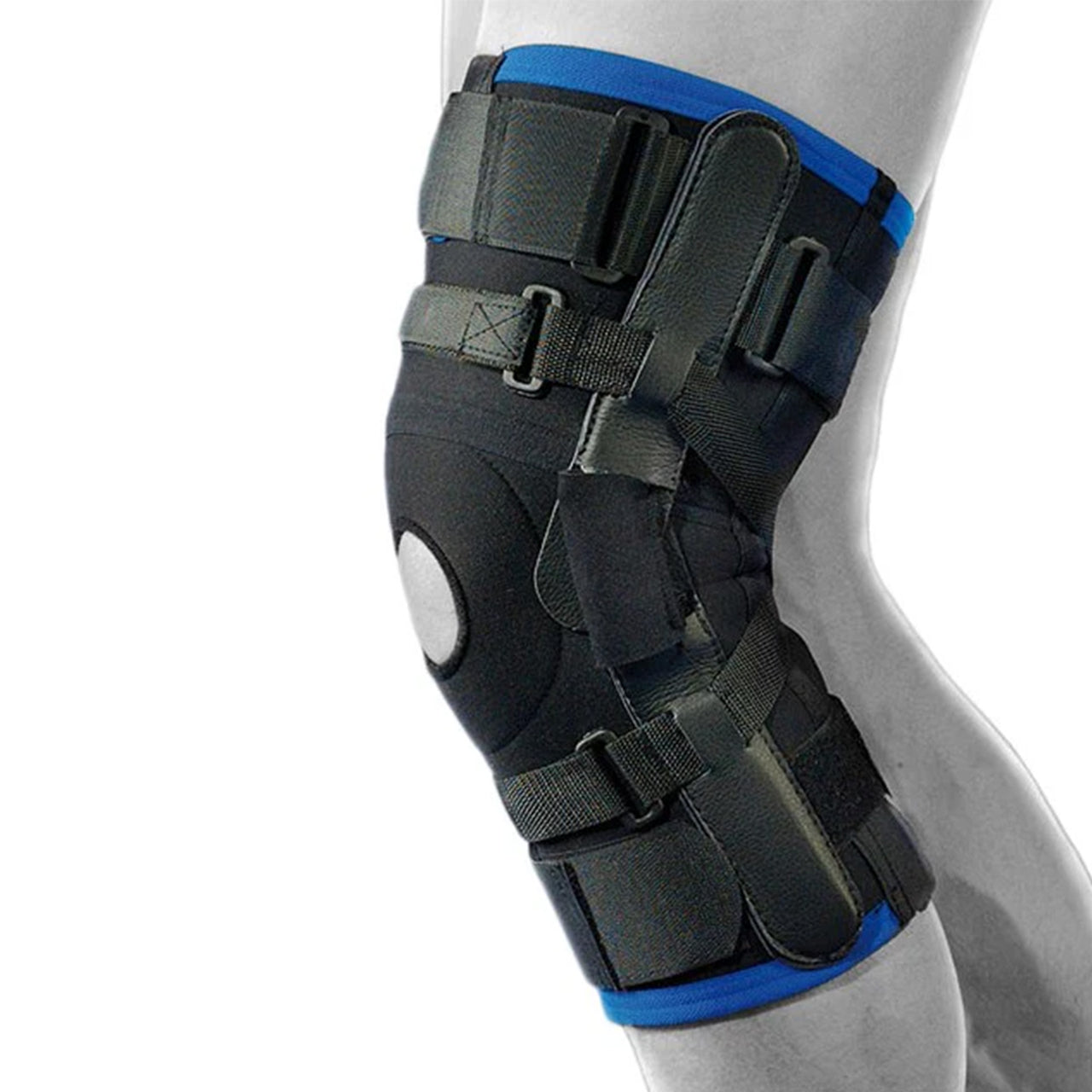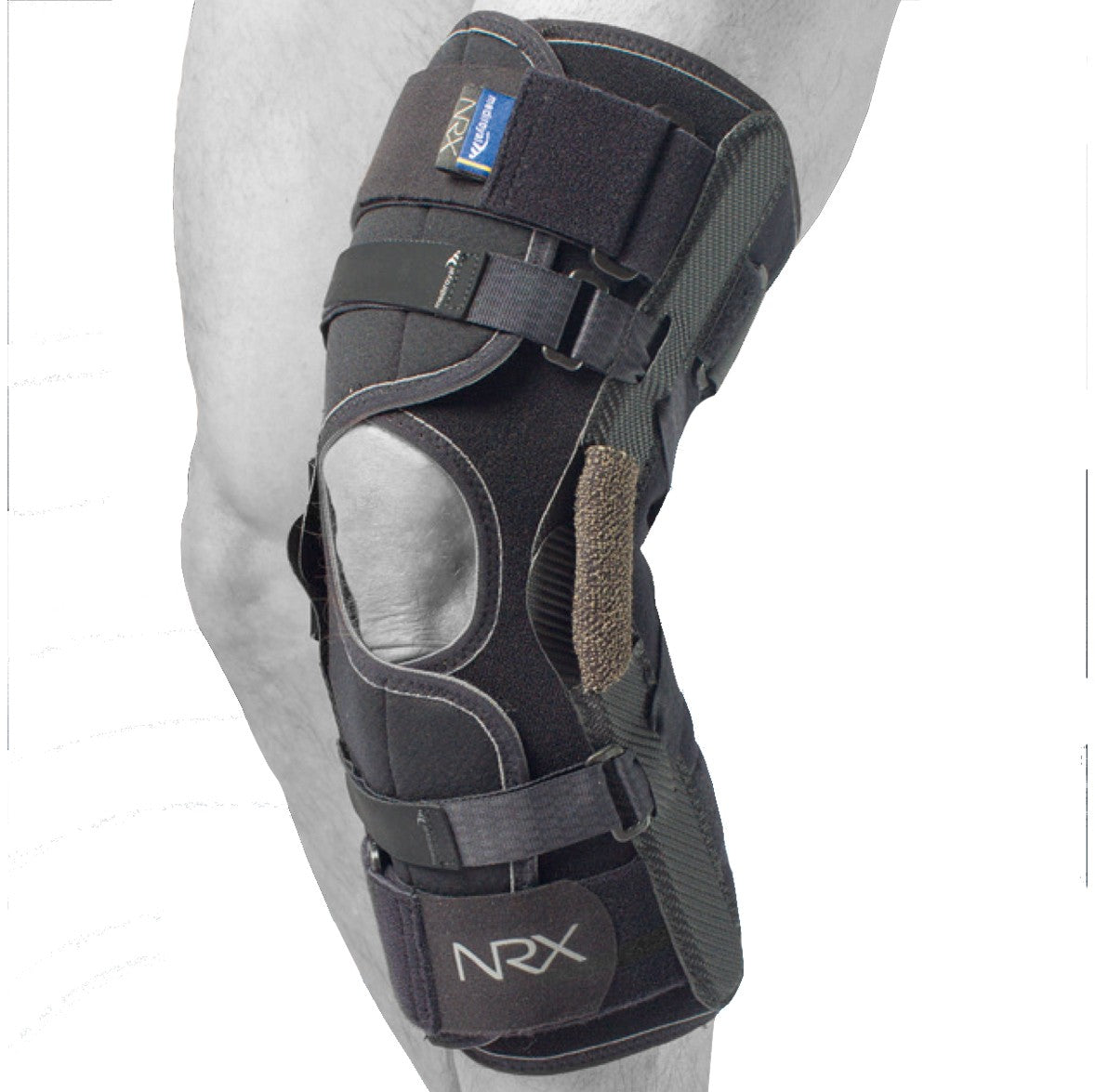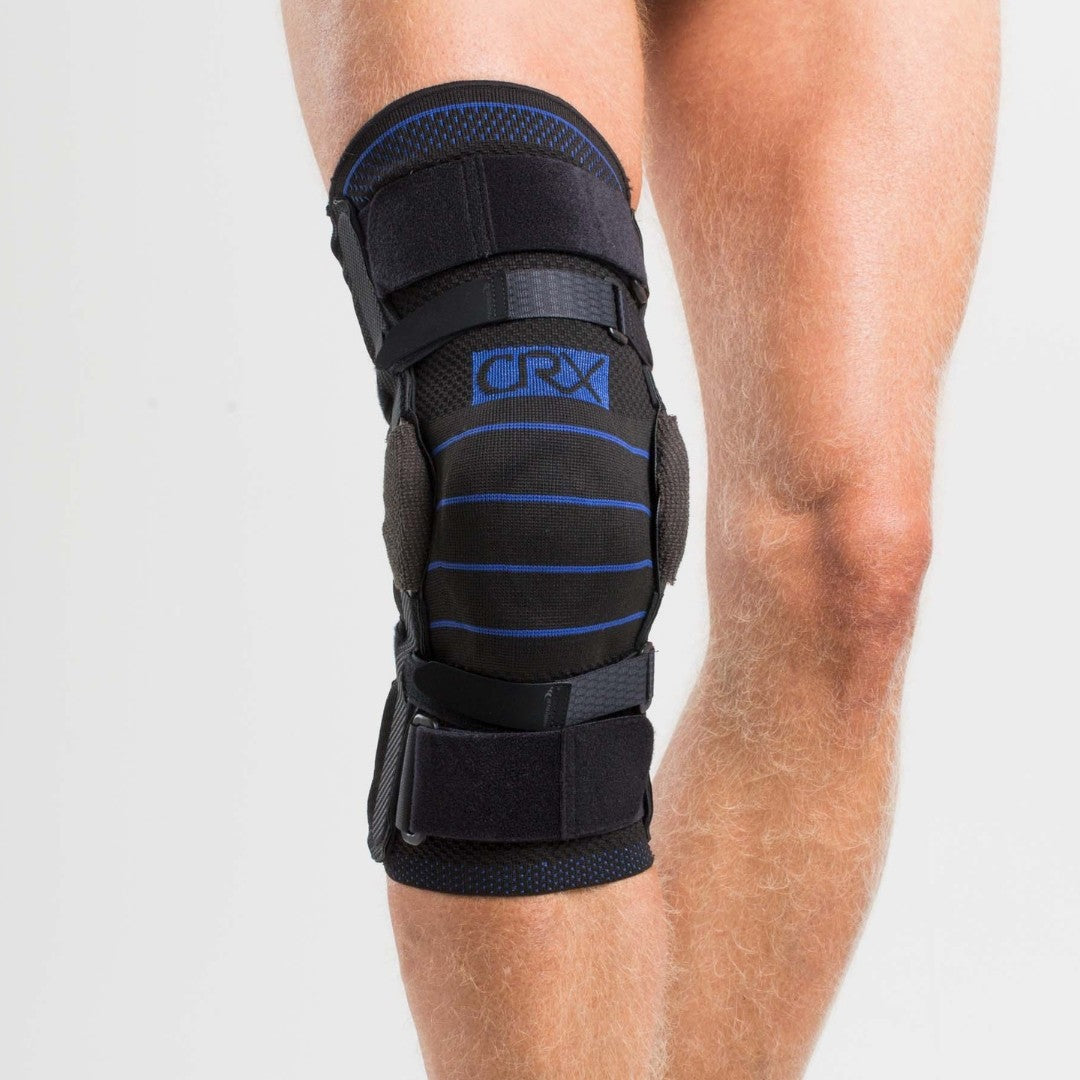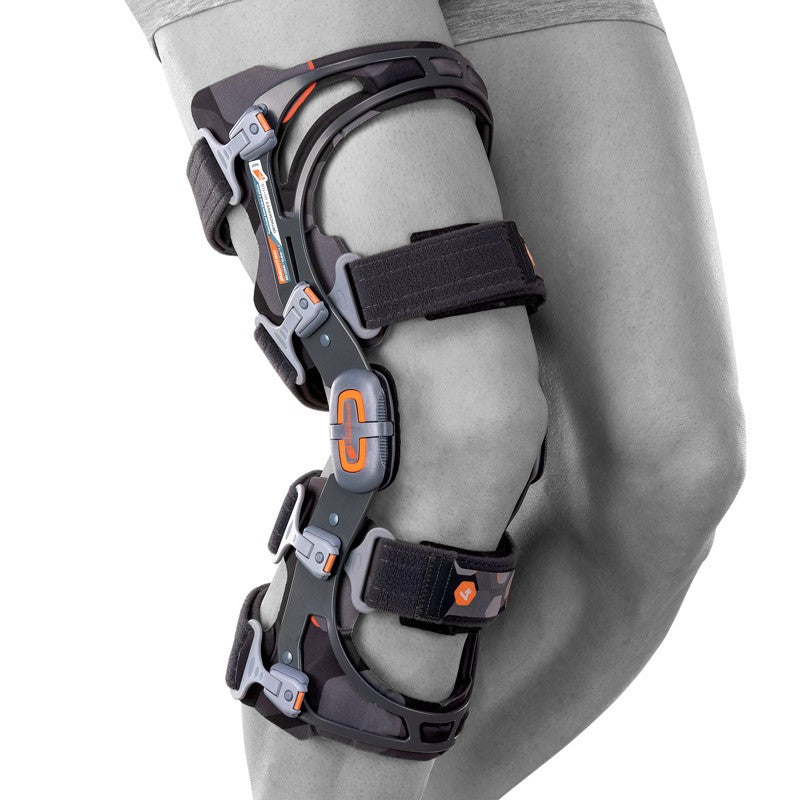Anterior cruciate ligament injury – symptoms, causes, knee pads and knee supports
An anterior cruciate ligament injury is one of the most common serious knee injuries and directly affects the stability of the knee joint. The injury often occurs in connection with twisting or overextension in high-intensity sports such as football, handball and alpine skiing. Treatment often includes surgery combined with long-term rehabilitation.
What is an anterior cruciate ligament injury?
The anterior cruciate ligament (ACL) is one of the most important stabilising ligaments in the knee joint and prevents the lower leg from being pushed forward in relation to the femur. It also prevents overextension of the knee joint. The injury occurs when the ligament is stretched, partially torn or completely torn. Anterior cruciate ligament injuries are divided into three degrees, from stretching to total rupture.
Common causes & risk factors
The injury is often caused by twisting force in the weight-bearing knee, hyperextension or forceful forward movement of the lower leg. The combination of these movements increases the risk of rupture. Anterior cruciate ligament injuries are particularly common in football, handball, slalom and alpine skiing. Women are affected to a slightly greater extent than men, which is partly explained by anatomical and biomechanical differences.
Symptoms
- Severe pain at the time of injury
- Immediate swelling in the knee joint
- Difficulty supporting the leg
- Instability and feeling like the knee is “giving way”
- Bleeding in the knee joint is common in cases of total rupture
When should you seek medical attention?
Anterior cruciate ligament injury is always a serious injury. If you suspect that the cruciate ligament has ruptured, you should immediately seek medical attention for examination, diagnosis and further treatment.
Recommended protection & support
In the case of cruciate ligament injuries, a stabilising knee brace is often used to provide lateral stability, movement control and prevent hyperextension. The brace can be used both as support while waiting for surgery, as a complement to rehabilitation or for people who do not have surgery. Rehabilitation with a physiotherapist is always crucial to regain function and stability in the knee joint. See all our knee and knee joint products here.
About our Injury Guide – quick guidance in case of complaints
In our Injury Guide, you will receive clear and easy-to-understand information about common injuries, how they occur and what symptoms usually occur. You will also receive recommendations on which protection and aids can relieve your discomfort and help you further in your rehabilitation. All information is based on expert knowledge from our licensed physiotherapist.
For more information about the knee, you can read more in the Injury Guide Knee. You can also go to the Injury Guide main page to read about other injuries and symptoms.
Related injuries:
Find the right protection for your needs
There are several ways to find the right product on our website. For a more personalized selection, you can use our filters and sort by injury, body part or sport. You can also get help from our AI assistant Eir, who is trained on all the content on our website and can help you with product recommendations, fit questions and order-related concerns – 24/7. If you would rather speak directly to our licensed physiotherapist, Ida, you can reach her via email or phone for personal advice and support in your product selection.





